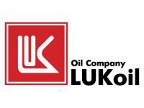Social and natural resources
History and culture People began to populate the Western Siberia 15-20 thousand years ago in the end of the ancient stone age. The population of people grew on the territory of the today Tyumen Oblast during the Mesolithic period (8-10 thousand years ago).
In 1586 the construction of a burg had begun on the river Tura; this burg had later become the first Russian town in Siberia - Tyumen.
The Tobolsk burg was established in 1587. Tobolsk became the most important Siberian centre in 1590.
In XVII Tobolsk and Tyumen reached the same level of development as the trade and industry centres of the European part of Russia. Tobolsk had the only stone-built Kremlin in the eastern part of the country.
In XVIII-XIX centuries Tobolsk was the administrative, cultural, and clerical centre of Siberia. Tyumen was the trade and industry centre. Being on the crossroads of east-west and north-south trade routes Tyumen had become the "gates of Siberia".
The construction of the Trans-Siberian railway gave further momentum to the development of industrial production in the region. In 1917 the centre of the province was moved from Tobolsk to Tyumen.
The year 1964 turned a new page in the history of the Tyumen Oblast. "The XX century discovery" of oil and gas fields became the foundation for the creation of the world's largest oil and gas complex.
In order to provide for such a powerful breakthrough strong construction industry, machine building, research and development institutes, design bureaus, new colleges and schools emerged in the Tyumen Oblast.
| | The Tobolsk Kremlin - the pearl of Siberia. | 
|
There are more than a thousand culture and leisure establishments in the Tyumen Oblast, 84 museums and 7 professional theatres. There are more than a thousand libraries open to general public; the number of books and magazines in these libraries exceeds 15 million.
There are 183 protected sites of historical interest, 328 architectural and urban development landmarks, 917 sites of archaeological interest on the territory of the Oblast.
The Slovtsov Tyumen Oblast Local Lore Museum established in 1879 has a collection of more than 200 thousand exhibits. The Tobolsk Bone Carving Art Centre has been famous for over 300 years.
There are 38 stadiums, 1608 gyms, 72 swimming pools, 48 health resort organisations and leisure facilities there for the people of the Oblast.

| The beautiful circus building has been built in 2004. | |
Natural resources The natural resources of the Tyumen Oblast include oil, peat, components for construction materials, low and high salt content mineral waters.
More than 2/3 of the northern part of the territory lies within the Kaimys oil and gas area. All oil fields discovered are located in the Uvatsk district in the northern part of the region.
| | There are 17 hydrocarbon deposit fields in the Uvatsk district. The explored oil reserves amount to 127.7 million tons. | 
|
The region produces peat, commercial reserves of which are estimated at 37 billion cubic metres. As of today there are 495 discovered fields, 5 more are being developed. Large deposits of vivianite (almost 20% of the world's reserves) have been found in some peat fields; utilisation of this vivianite can satisfy the agricultural demand for phosphate fertilizers. Sapropels, quartz sands, brick and bloating clays, limestone, and building stone are extracted on the territory of the region. More than 210 deposits of brick, bloating, and sandy clays have been discovered, the reserves amount to 631 million cubic metres; several deposits with the total reserve of 90 million cubic metres are being developed. More than 44% of the land in the south of the Oblast is covered with forests of birch, pine, spruce, fir, aspen, cedar, and larch.
At the moment the total area of the unused available agricultural land in the south of the Oblast amounts to about 700 thousand hectares out of which 284 thousand hectares is productive croft land. The South of the Oblast is rich with reserves of low and high salt content mineral waters. The underground water contains significant amounts of iodine and bromine. The largest iodine and bromine sources are Cherkashinskoye and Tobolskoye; these reserves have industrial significance.
There are many rivers and lakes in the Tyumen Oblast. The longest rivers of the oblast are Irtysh, Tobol, Ishim, Tavda, and Tura; the largest lakes - Bolshoy Uvat and Chyornoye. There are almost 30 species of fish living in these waters, 20 of them have commercial significance. Population and labour resources The Oblast is highly urbanised: city and town dwellers amount to 77% of the population, countryside - 23%. Two thirds of the population is able-bodied, employable people.

| The Tyumen city centre has a European look. | |
Science Tyumen is one of the main educational centres of the Urals and Western Siberia. The city has 11 higher education establishments, the largest of which - the Tyumen State Oil and Gas University - teaches more than 34 thousand students.
The majority of educational centres carry out active work in science and research aimed at the development of machines and technologies designed for carrying out specific tasks in the specific conditions of the northern regions of Russia.
The Tyumen State Oil and Gas University has a technopark; one of the goals of the technopark is the development of energy saving environmentally clean technologies. New technologies for oil and gas production and transportation are developed in the region.
| | The Schlumberger Siberian Training Center opened in Tyumen in 2008 to train and retrain personnel of service, oil, and gas companies. | 
|
|








